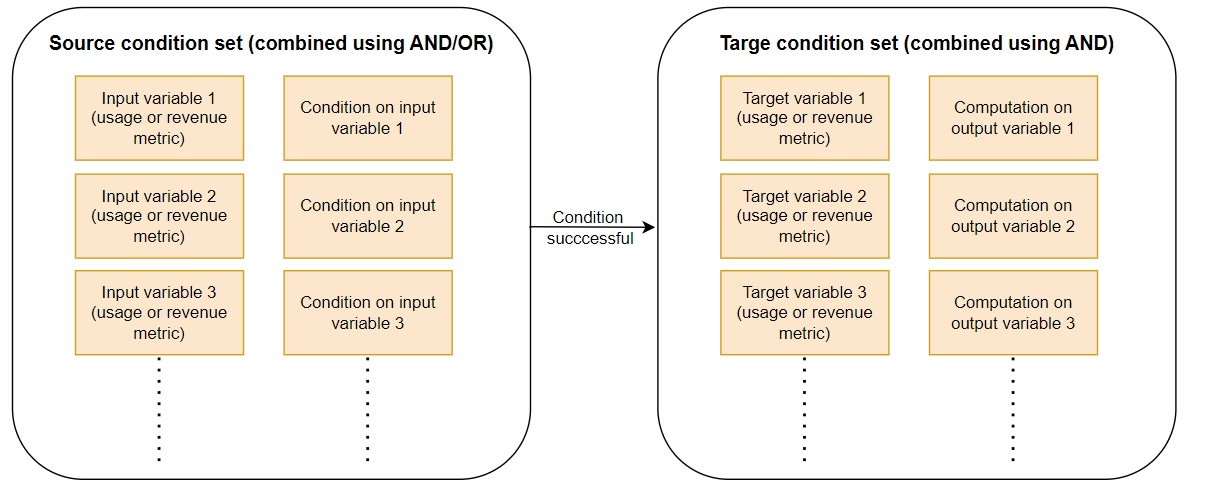Price Plan
Pricing Rules
Overview
Pricing rules allow you to package and bundle your product in completely unique ways and provides you extreme flexibility to monetize as you see fit. This is an advanced rule engine that can be used to apply different rules on existing rate cards in an invoice or other static/dynamic fields and apply a computed logic while you generate an Invoice.
Configurability of pricing rules
Configurability
Pricing rules in Togai are configurable using jsonLogic syntax or via javascript. Computation of a pricing rule happens along with the computation of the invoice (near real-time). The following entities should be defined for a pricing rule.- Type - You can configure the pricing rule to be a discount or an additional charge
- Rule - A rule is a condition that is based on the values of a variable in the price plan/invoice. You can use multiple variables to create a condition across multiple rate cards of the plan.
- Computation - Currently, the target action is split into computation and destination as 2 configurable values. You can define the computation as a mathematical formula using jsonLogic syntax.
- Add/update - You can either add a new line item for the target computation or update an existing line item of the invoice.
- Order - Here, you define the priority of computing the pricing rules since inter-dependent pricing rules will cause conflict, if parallelized.
Example 1: Payments company volume based discount
Let’s take the case of a payment processor like Stripe. Stripe’s pricing model is based on the transaction amount and their default pricing is 2.9% of the transaction amount + 30 cents per transaction. For simplicity, let’s assume Stripe’s default pricing is 3%. Now, they have a custom contract with a large enterprise which follows the below pricing -- 2.8% for credit card transactions
- 2% for debit card transactions
- Flat $1 per ACH or Wire
- If the overall payment value during a month across all payment modes cross $1 million dollars, then provide additional 10% discount on the overall invoice.

